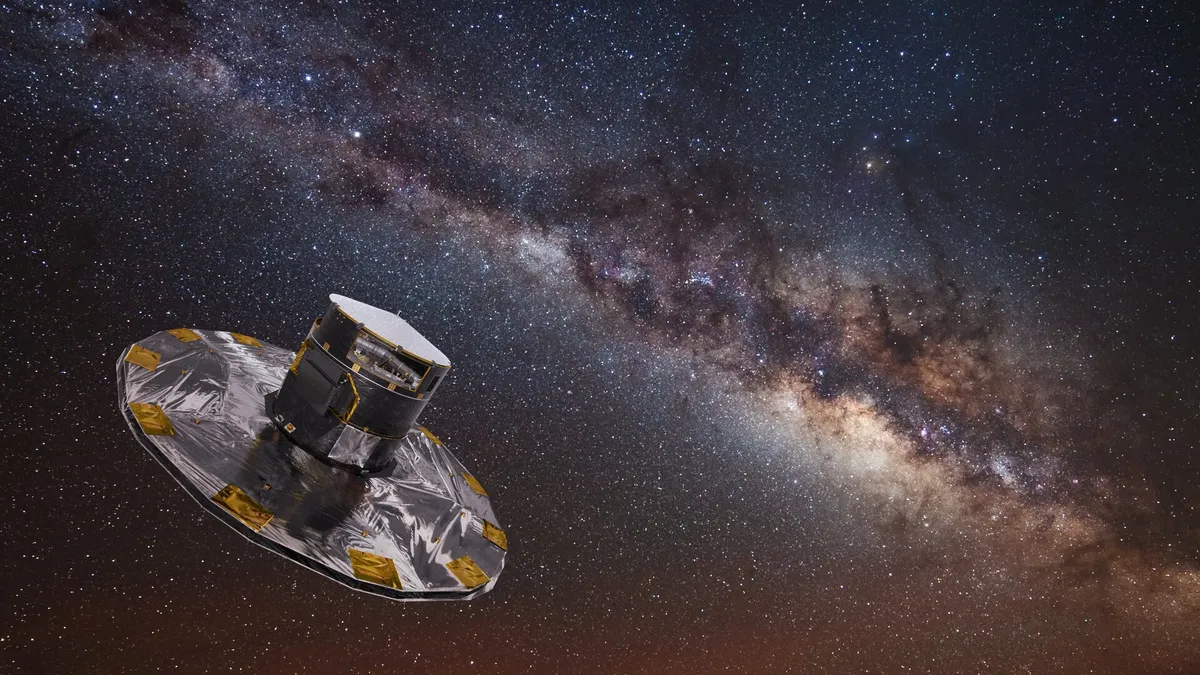
A team of astronomers has made an extraordinary discovery at the edge of our galaxy, unveiling a rare exoplanet that utilizes a space-time phenomenon first predicted by Albert Einstein. This newly identified exoplanet, named AT2021uey b, is a gas giant comparable in size to Jupiter, situated approximately 3,200 light-years from Earth. What makes this discovery particularly remarkable is that it is only the third planet ever observed so far from the dense center of our galaxy.
AT2021uey b orbits a small, cool M dwarf star once every 4,170 days, placing it in a unique position within the Milky Way. The planet's location challenges our existing understanding of where planets can exist, especially in regions that are less populated with heavier elements necessary for planet formation.
Perhaps the most fascinating aspect of this discovery is the method used to detect AT2021uey b: a phenomenon known as microlensing. This effect occurs when the light from a host star is magnified due to the warping of space-time caused by the gravity of an intervening planet. The research team, which published their findings on May 7 in the journal Astronomy & Astrophysics, underscores the complexity and rarity of this method.
According to study co-author Marius Maskoliūnas, an astronomer at Vilnius University in Lithuania, discovering a planet using microlensing requires a combination of expertise, patience, and a stroke of luck. "You have to wait for a long time for the source star and the lensing object to align and then check an enormous amount of data," Maskoliūnas explains. This meticulous process is complicated by the fact that about 90% of observed stars pulsate for various reasons, making the detection of the microlensing effect a challenge.
Since the detection of the first exoplanet in 1992, nearly 6,000 alien worlds beyond our solar system have been discovered. The two predominant methods for detecting exoplanets are transit photometry and radial velocity, which identify planets by observing the dimming of host stars or the gravitational effects they exert. In contrast, microlensing, derived from Einstein's theory of general relativity, allows astronomers to identify planets by observing how their gravity distorts light.
Einstein's theory posits that gravity is not an unseen force but rather a result of the curvature of space-time caused by matter and energy. As light travels through these curved regions, it follows a curved path, leading to the magnification of a star's light when a planet passes in front of it. "What fascinates me about this method is that it can detect those invisible bodies," Maskoliūnas remarked, comparing it to observing a bird's shadow without seeing the bird itself. "With some level of probability, you can determine whether it was a sparrow or a swan and at what distance."
The cosmic shadow of AT2021uey b was first detected in 2021 through data collected by the European Space Agency's Gaia telescope, which revealed a momentary spike in the brightness of its host star. Following this initial observation, astronomers conducted detailed follow-up studies using the Molėtai Astronomical Observatory in Vilnius, allowing them to estimate the planet's mass at 1.3 times that of Jupiter. The host star itself burns at approximately half the temperature of our sun and is located four times farther from the Earth than our own sun.
The discovery of AT2021uey b, so far from the Milky Way's central bulge, provides new insights into the potential locations where planets can be found. This finding adds to the growing body of evidence suggesting that planets can exist in diverse and unexpected environments throughout the universe, even in areas that lack the heavier elements typically associated with planet formation.